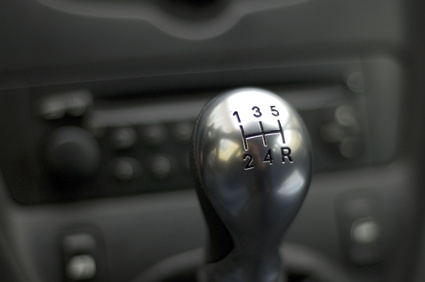
Unpredictable gas prices, the environment, national security, your bank account; all of these provide great reasons to want to improve your car's fuel economy. If you're driving a car with a manual-shift transmission, then you're already on your way to better gas mileage, as stick-shift cars tend to achieve better mileage than their automatic counterparts. However, your gas savings needn't stop with simply owning and driving a manual car. There are ways you can take your vehicle's fuel efficiency to a whole new level.
Shift into the highest gear as quickly as possible when accelerating. For example, when merging onto the highway or pulling out from a stop sign, go from first or second gear up to fourth or fifth in the shortest amount of time without stalling the engine (because your engine will run at the higher RPMs in lower gears, this technique will increase your car's gas mileage).
Use your overdrive gear when driving your stick-shift on the highway. If your car doesn't have a gear designated as overdrive, use the highest gear instead. Again, this allows your engine to run at lower RPMs and to save gas. Use cruise control as well, in order to limit your car's speed (and therefore the engine's RPMs).
Use the clutch and the "neutral" position to your advantage. For instance, depress the clutch and shift into neutral to coast to a stop. Of course, in order to do this correctly, you need to anticipate your stops. Think ahead and shift to neutral as soon as possible. Also, on long stretches of downhill driving, you can shift into neutral and allow your manual vehicle to coast. When you're ready to shift back into gear, though, make sure you hit a high gear first and then downshift, if necessary.
Drive your stick-shift car below 60 miles per hour whenever you can. Even if your stick-shift car is a sports car or classic muscle car, you must resist the temptation to speed. The faster you travel, the greater the workload you place on your engine. The increased workload translates to a loss in gas mileage. Every five miles per hour beyond 60mph will diminish your gas mileage and add as much as 24 cents per gallon of gasoline, according to the U.S. Department of Energy.